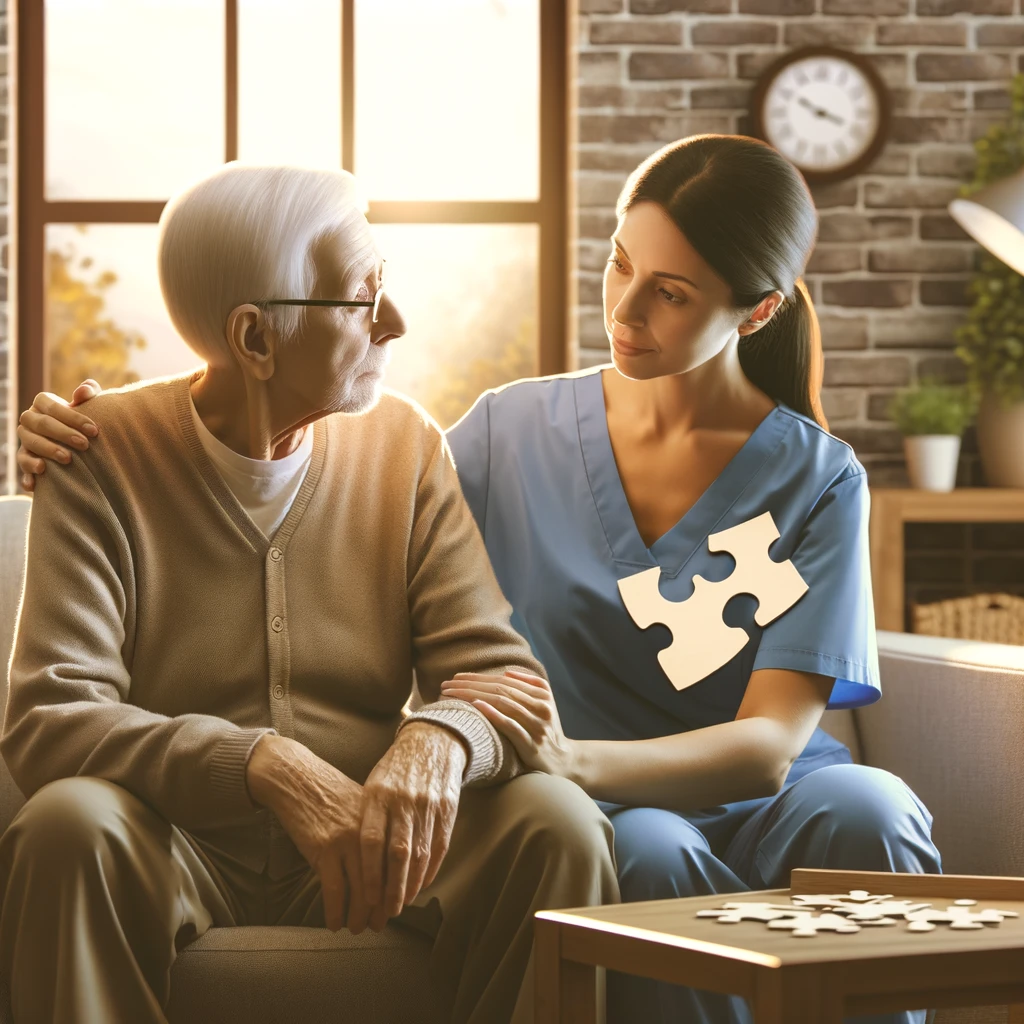7 Stages of Lewy Body Dementia (LBD) is a progressive brain disorder that affects thinking, memory, and motor control. It is characterized by Lewy bodies—protein deposits in the brain that affect neurotransmission. Understanding the stages of Lewy Body Dementia is crucial for caregivers and patients to manage the disease effectively. This blog post will delve into the 7 stages of Lewy Body Dementia, providing insights into the progression of this condition.
Stage 1: Early Symptoms of Lewy Body Dementia
Symptoms might be so mild in the initial stage that they are often overlooked. Individuals may experience slight changes in behavior, mood swings, and minimal cognitive impairment that do not significantly impact daily life. These early signs can be mistaken for normal aging or stress.
Stage 2: Mild Cognitive Impairment
As the disease progresses to stage 2, symptoms become more noticeable. Cognitive impairments may include memory loss, difficulty concentrating, and problems with decision-making that go beyond typical age-related changes. At this stage, individuals may still maintain their independence in daily activities but might need assistance with more complex tasks.
Stage 3: Mild Dementia
Stage 3 is characterized by an increase in cognitive decline, which becomes evident in social and occupational settings. Individuals may have difficulty with spatial awareness, experience visual hallucinations, and show signs of Parkinsonism, such as rigidity and tremors. Communication might become more challenging at this stage.
Stage 4: Moderate Dementia
During the fourth stage, the symptoms of dementia become more pronounced. Individuals will likely need help with daily activities and may exhibit significant changes in personality and behavior. There is an increased risk of falls due to motor impairments, and complex hallucinations become more common.
Stage 5: Moderately Severe Dementia
At stage 5, individuals require substantial assistance with daily living activities. Cognitive decline is more severe, leading to confusion, disorientation, and difficulty recognizing close relatives and friends. Motor symptoms may include increased stiffness and difficulty moving.
Stage 6: Severe Dementia
In stage 6, individuals with Lewy Body Dementia need constant care and supervision. Communication becomes significantly impaired, and physical abilities continue to decline. At this stage, individuals may be unable to walk and spend most of their time in bed or a chair.
Stage 7: End-Stage Dementia
A complete loss of autonomy marks the final stage of Lewy Body Dementia. Cognitive functions and physical movements are profoundly affected. In end-stage dementia, the individual may be unable to speak or move and may require around-the-clock care for all personal needs.
Conclusion
7 Stages of Lewy Body Dementia is a challenging journey for both the individuals diagnosed and their caregivers. Understanding the stages of Lewy Body Dementia can help in planning for care and making informed decisions as the disease progresses. Early diagnosis and personalized care strategies are essential in managing the symptoms and improving the quality of life for those affected by LBD. If you or a loved one is experiencing symptoms of Lewy Body Dementia, it is crucial to seek medical advice for an accurate diagnosis and appropriate treatment plan.
FAQs on 7 Stages of Lewy Body Dementia
What is Lewy Body Dementia (LBD)?
Lewy Body Dementia is a type of progressive dementia that leads to a decline in thinking, reasoning, and independent function due to abnormal microscopic deposits that damage brain cells over time. These deposits are called Lewy bodies, named after the scientist who discovered them.
How is LBD different from Alzheimer’s disease?
LBD differs from Alzheimer’s in its symptoms, progression, and how it affects the brain. While both conditions involve cognitive decline, LBD is more likely to cause early symptoms such as visual hallucinations, sleep disturbances, and Parkinsonian motor symptoms.
What are the first signs of Lewy Body Dementia?
The first signs of LBD can include subtle changes in mood and behavior, confusion, reduced attention span, visual hallucinations, and difficulty with complex tasks. Motor symptoms similar to those of Parkinson’s disease, such as tremors and stiffness, may also appear early on.
Can Lewy Body Dementia be treated?
There is currently no cure for LBD, but some treatments can help manage the symptoms. These may include medications to address cognitive symptoms, Parkinsonism, and mood disorders. Non-pharmacological strategies, such as physical therapy, occupational therapy, and speech therapy, can also support quality of life.
How quickly does LBD progress?
The progression of LBD varies from person to person. Some may experience a gradual decline, while others may see more rapid changes in a shorter period. Factors influencing the rate of progression include the individual’s overall health, age, and severity of symptoms at diagnosis.
Is there a way to prevent Lewy Body Dementia?
Currently, there is no known way to prevent LBD. However, maintaining a healthy lifestyle, including regular physical activity, a balanced diet, and mental stimulation, may help reduce the risk of developing dementia.
How is LBD diagnosed?
Diagnosing LBD can be challenging and involves a combination of medical history, physical examinations, neurological assessments, and sometimes brain imaging tests. Accurate diagnosis is crucial for managing the disease effectively.
Can LBD cause death?
LBD is a progressive disease that can lead to severe physical and cognitive decline. While LBD itself is not directly fatal, it can lead to complications that may reduce life expectancy, such as infections, falls, and difficulty swallowing.
How can caregivers support someone with LBD?
Caregivers can support someone with LBD by creating a safe and supportive environment, managing medications, assisting with daily activities, and providing emotional support. It’s also important for caregivers to seek support for themselves to manage the stress and challenges of caregiving.
Where can I find support if I or a loved one has LBD?
Support can be found through healthcare providers, local and online support groups, and organizations dedicated to dementia care, such as the Lewy Body Dementia Association. These resources can provide valuable information, coping strategies, and community support for individuals and families affected by LBD.

